

Body of IITR
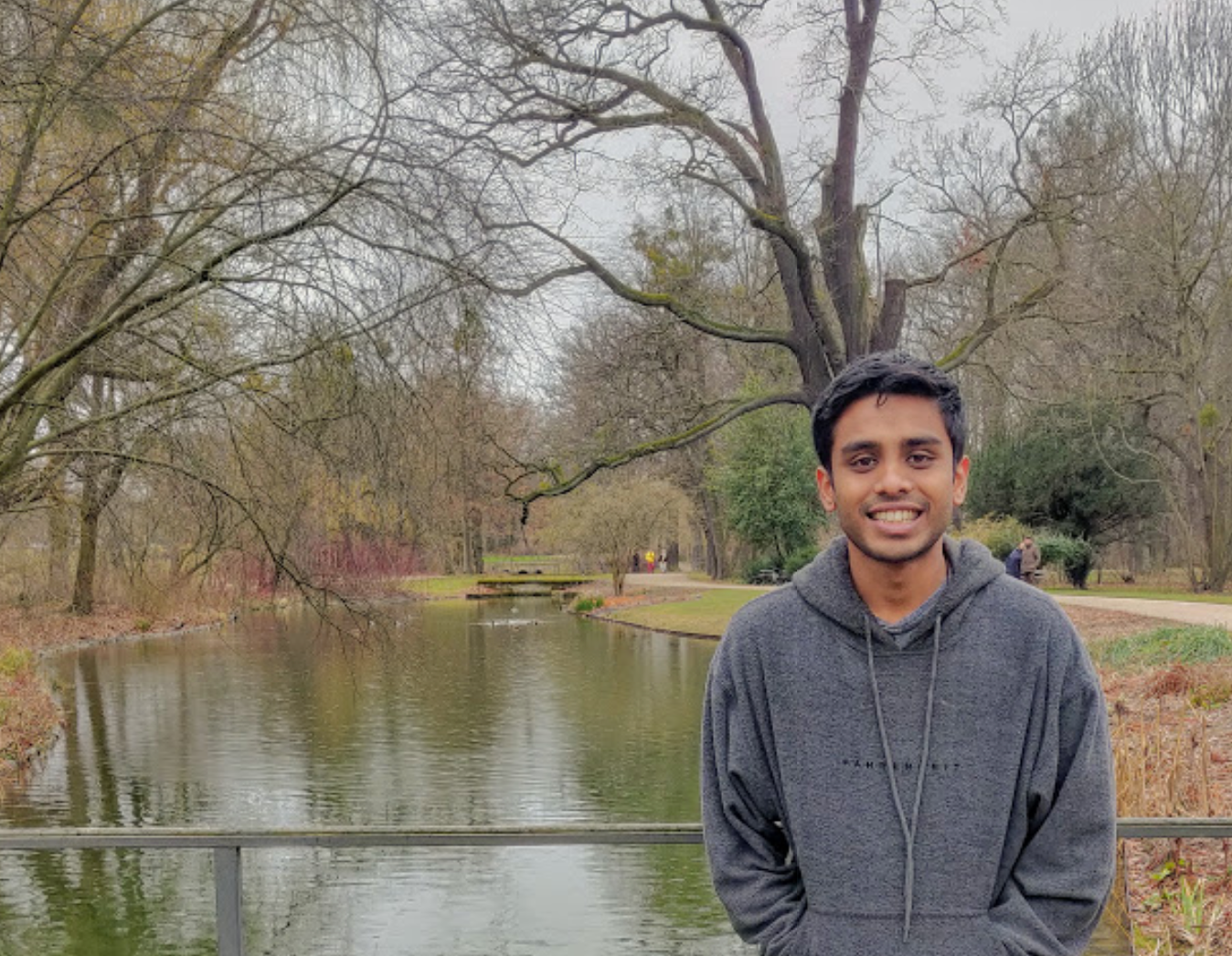
I spent my last semester (and a couple more months so far) working on digital and programmable architecture, at the knowledge architecture laboratory in TU Dresden, Germany. I had to extend my stay beyond July 2020 to complete my projects, as they got delayed a bit during the CoVID pandemic. I am being supported by a DAAD scholarship and TU Dresden. It has been an adventure, and I have experienced a lot of surprises, twists and turns throughout the journey. I also had a chance to work on a part-time internship at an architecture firm for a couple of months. Dresden is an architectural feast for the eyes, with its rich culture and people it inhabits from all around the world. The institute administration and foreign offices in Germany have been amicable and supportive throughout the stay and during the pandemic.
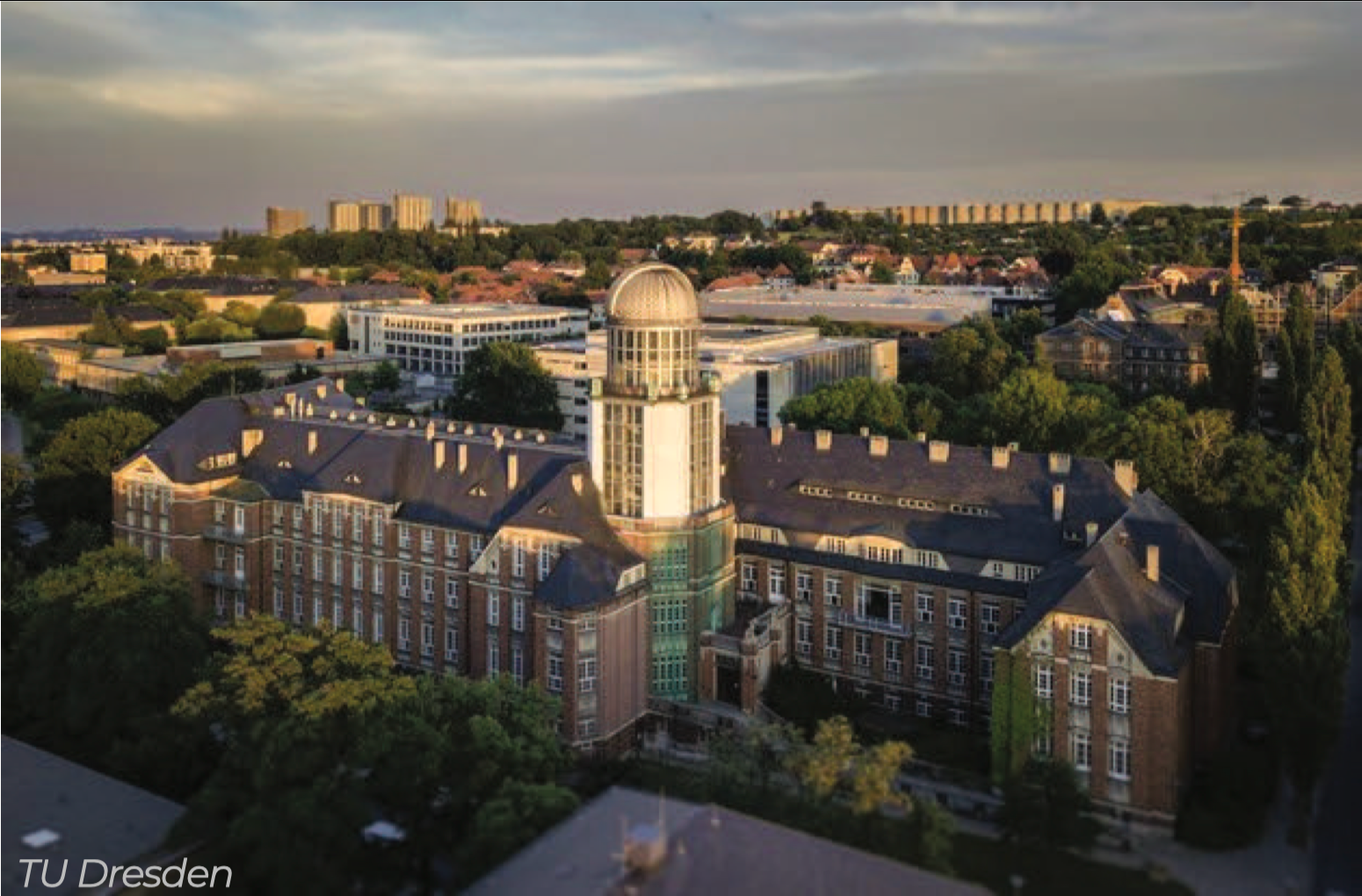 TU Dresden
TU Dresden
I was interested in the technological aspects of Architecture and strategical methods in planning. It’s an irony that I draw and design a lot while solving physics problems, and vice-versa - both the activities simulate me a lot. I worked at the NetZed lab-IITR, on exciting and very technical projects in Architecture, which involved a bit of coding and math. I also worked on a project with Ar. Suhasini Ayer in December 2019, on the analytical thermal comfort study of Humanscapes, Auroville. I had a wonderful time, and I realised that I also needed the vital dose of the artistic, and creative elements in work, along with the technical and strategical aspects, to keep myself motivated - I needed the balance.
I sent several emails to universities and firms, but in most places, funding was a problem, and I had to find my own funding source by involving a third party funding agency. That’s when I mailed Prof. Joerg at TU Dresden. I have heard about him and the research activities of his laboratory in Germany though the Bauhaus@100 event in IITR. He visited IITR for the event and gave a lecture on Digital Architecture. He liked the projects I had shared and replied immediately. The lab would support through recommendation letters for funding, but I had to find my own funding source.
I tried searching for different sources like DAAD, IITR schemes, etc. I couldn’t get any support from IITR’s existing schemes. The other funding agencies took time for nominations. I finally mailed the TU Dresden international office explaining my situation before giving up. Surprisingly they replied and arranged cumulative support from three different sources, and one of them was DAAD. I had to register and enrol in TU Dresden to receive all the support. After getting nominated for the research grant, the other processes were easy and smooth, and I reached Dresden on 1st January 2020.
I would advise keeping yourself updated with the IITR emails and notices. It takes barely 10 minutes a day to check it up, but once you do, you’d be surprised to know how much is going on in the institute. If you are looking for a research internship, first list down your field(s) of interest and start directly emailing professors/research groups in various universities, who work on the same topic(s). Apart from that, keep applying for funding schemes from DAAD, Mitacs, etc., and other co-op programs with IITR, and you will find a research group of your preference through the program. If you are applying directly to the professors or research groups, then you might have to apply for funding separately. Do mail the international office of the institute where the research group is hosted. They would reach out and may even support you as they did in my case. Always keep your resume crisp, have a proper portfolio of projects in which you worked on. This, along with a properly drafted motivation letter, will make a compelling application. While applying for scholarships separately, attach a recommendation letter from the research group along with their invitation letter.
The lab is known for its international cooperations within different faculties(departments) and research groups, the university is top ranking in this criterion in Germany. Once I propose any project, I was able to get support and connect with many scholars and experts in that field.
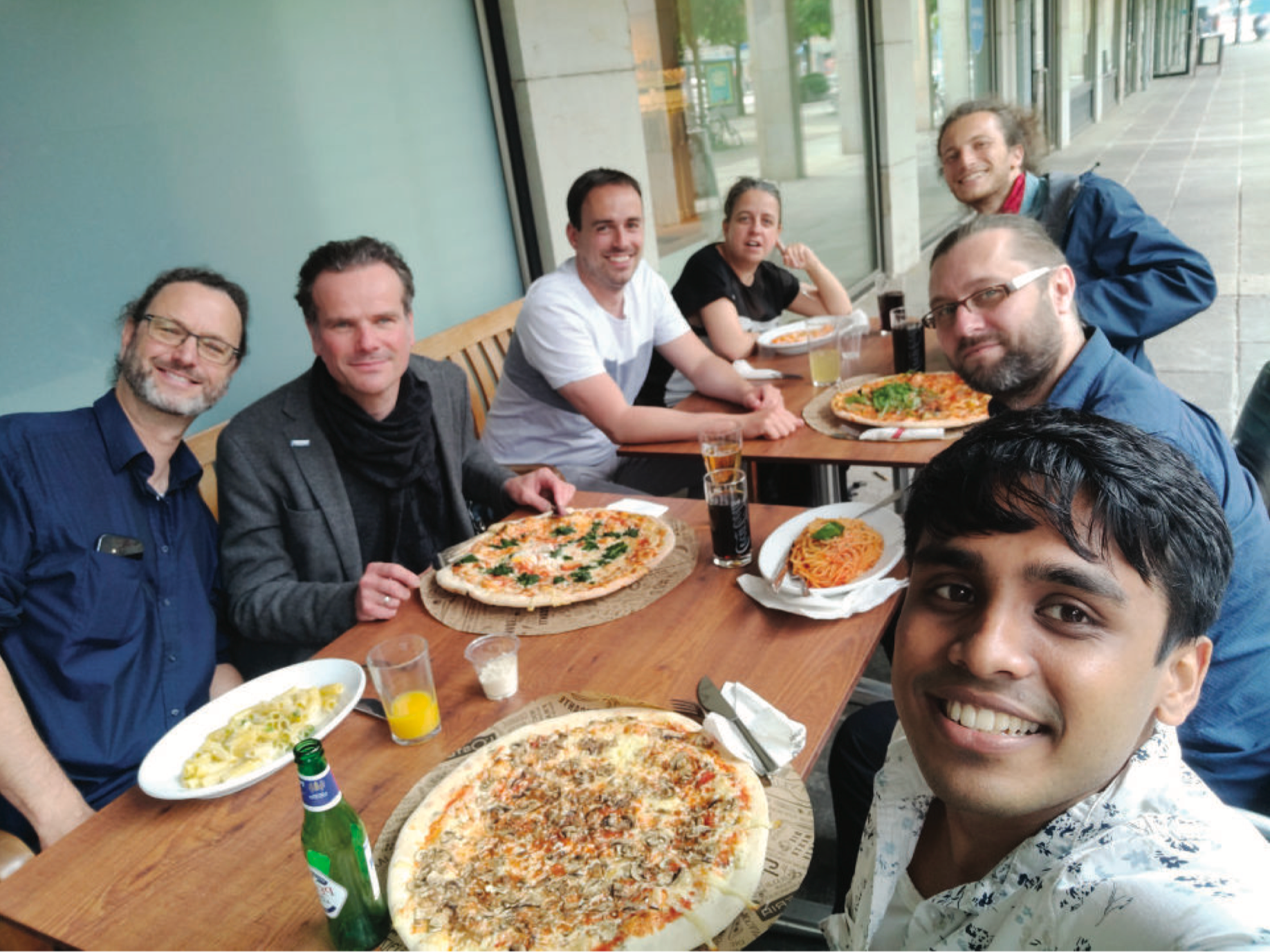 Lunch after lab’s U-CODE press conference
Lunch after lab’s U-CODE press conference
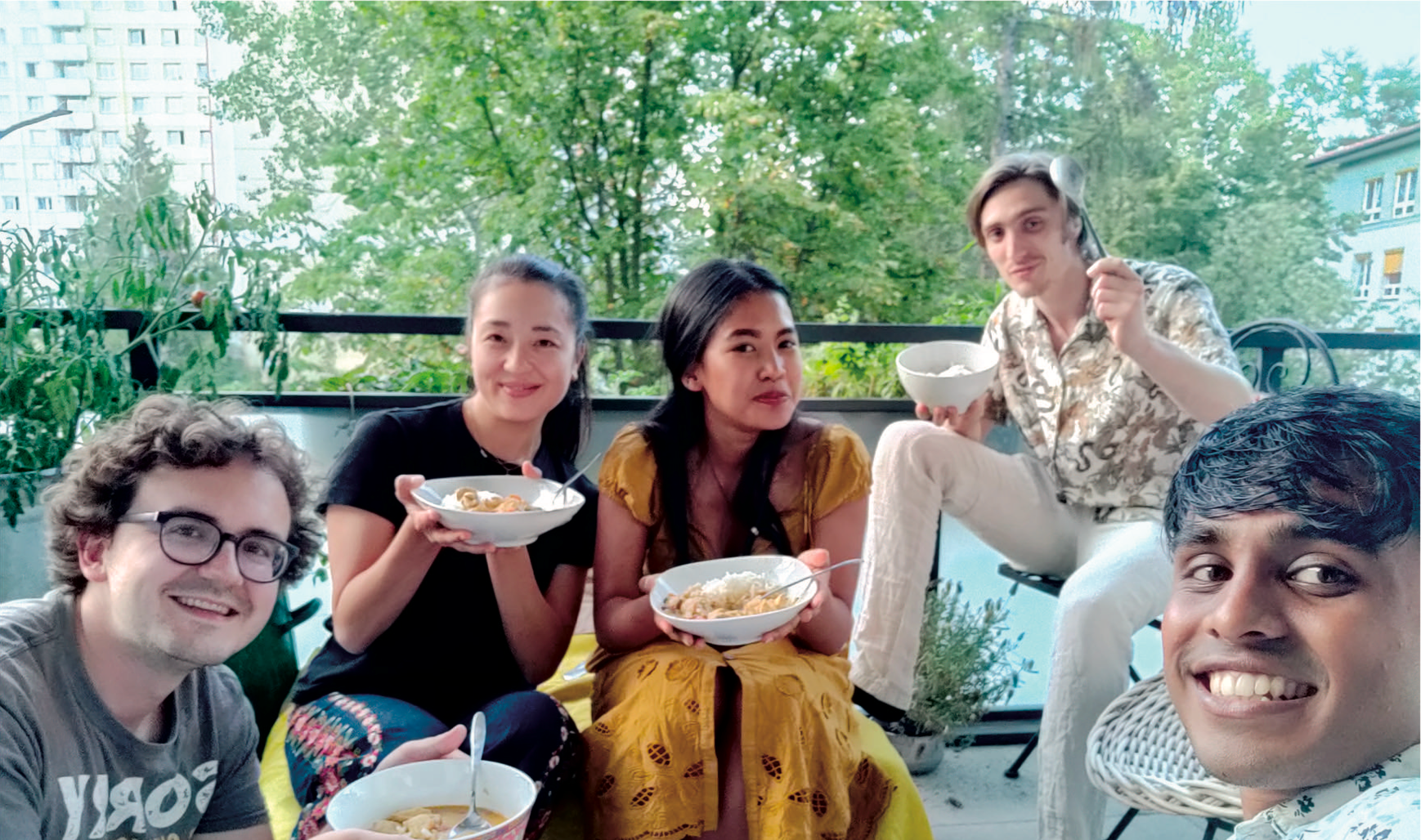 Colleagues at KA Lab trying hard to finish the food I cooked :P
Colleagues at KA Lab trying hard to finish the food I cooked :P
I realised on the first day that no one will be assigning tasks for me, or setting any deadlines. I had to either take up initiatives on my own ideas, or be aware of what others are doing, and propose to collaborate with them. I had to keep my own deadlines and meet them (that’s something which is not in my domain of expertise, but I tried my best). My colleagues at the lab were very supportive whenever I got lost, and always opening up on various opportunities to work on projects available from time to time. I learnt a lot working on research projects, especially patterns in both architectural design and in geometry. I spent a big chunk of time in January in the SLUB maker space, an annexe right below the lab, where all the laser cutters and 3D printers were located.
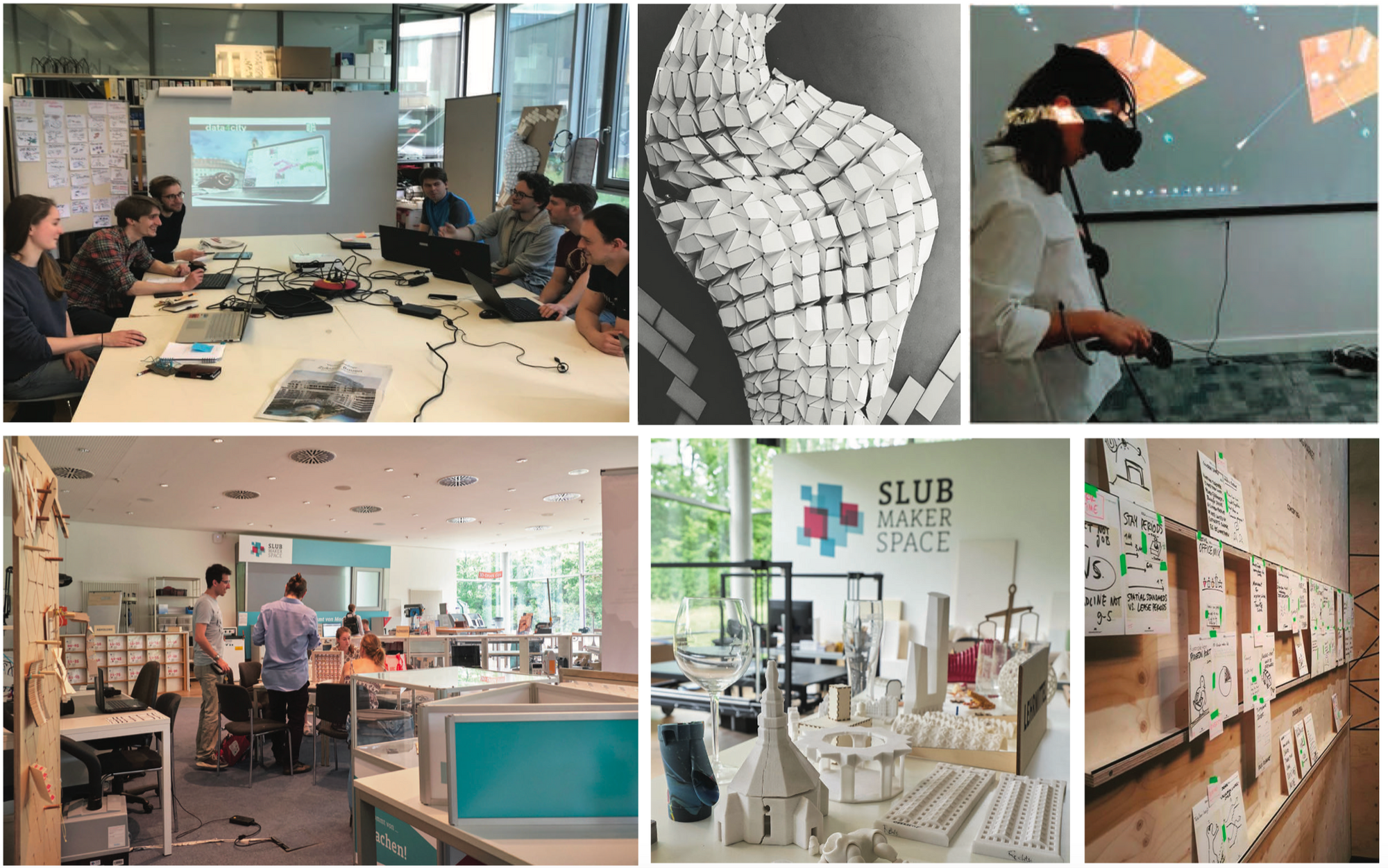 The Lab and SLUB MakerSpace
The Lab and SLUB MakerSpace
I started to work on origami structures which initiated works on an umbrella of projects on programmable architecture. My initial work mostly involved in developing mechanisms to actuate programmable surfaces. Meanwhile, my colleagues at the lab were open to involving me in exciting projects and proposals. During February, the CoVID pandemic was making the headlines, and Wuhan was the worst-hit hotspot. It was still considered an epidemic, and countries were still assessing the risks. I got a chance to work on an emergency proposal call for smart co-creating resilience during the emergency to lay down critical key strategies to handle the situation and to increase the level of preparedness. The team collaborated with hospitals and organisations in Europe and China.
When I had finally fixed with my time plan for an architecture project, Germany was hit with the outbreak. Although home office was not very efficient in my case, the long days gave me time to think, structure my thoughts, and write the first draft of a research paper for programmable materials. Prof.Joerg was very supportive and encouraging, guiding me through it.
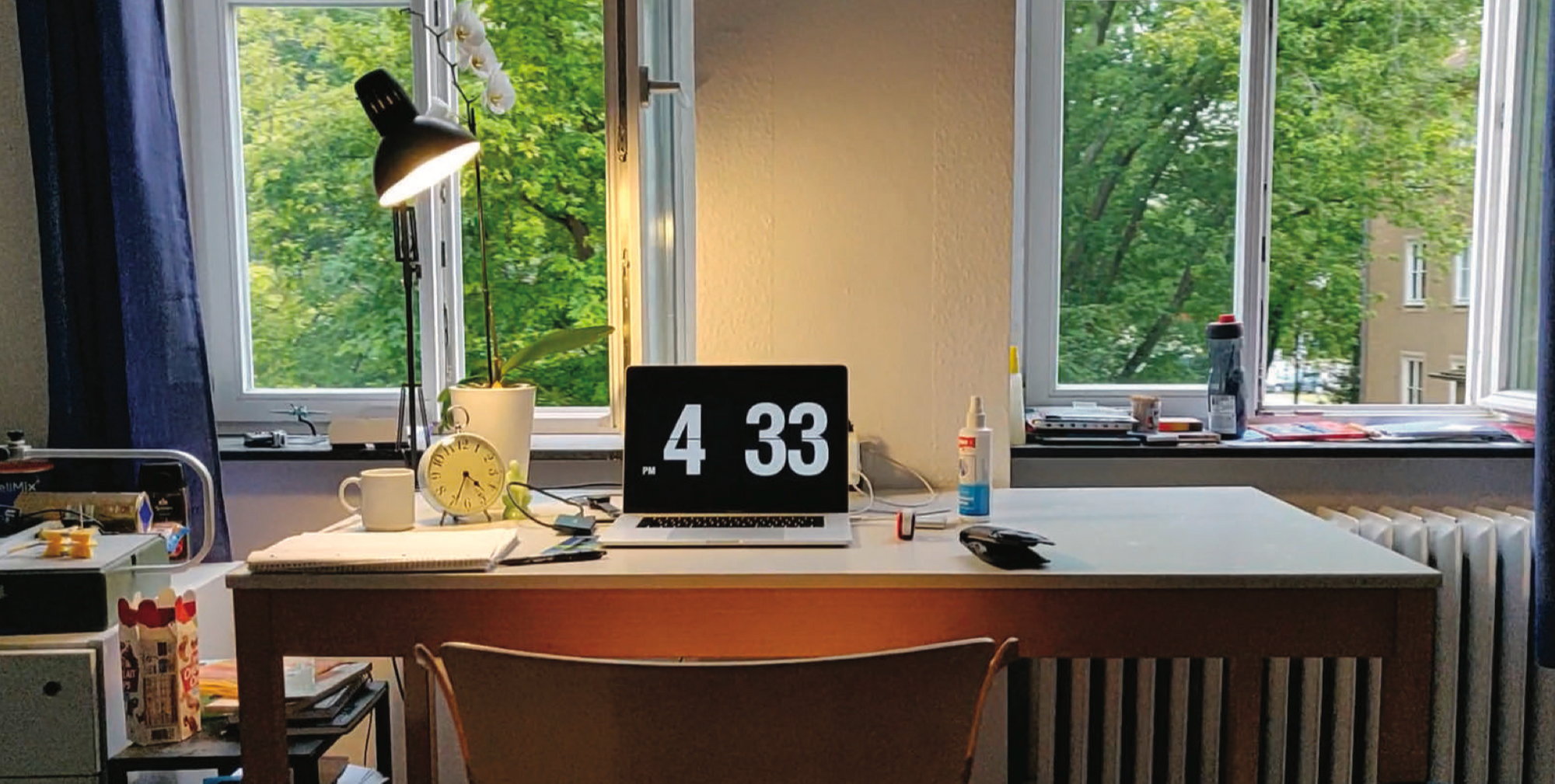 Home Office
Home Office
I also had to improvise by finding opportunities to take up architectural projects, since the project we decided in the lab (Kyiv NAUPROSTIR) was delayed due to the crisis. The professor supported my decision to take up a voluntary part-time internship, and I mailed a few firms in Dresden. Ruairi O’Brien architects replied, I met them, and I liked their way of work. I also liked the firm’s atmosphere, it is in the same building as the Erich Kastner museum which the firm designed, right above it. The projects were interdisciplinary, I learnt a host of new software used by the firm. The project manager made the problems in sequencing and organising the tasks feel impossibly simple, and agile. It is a small but efficient team working during the crisis, so I was given diverse tasks to do. I learnt a lot about the history of buildings in Europe, its architecture, and about the importance of lighting. I did this part-time work from May till early August, after which the university activities resumed.
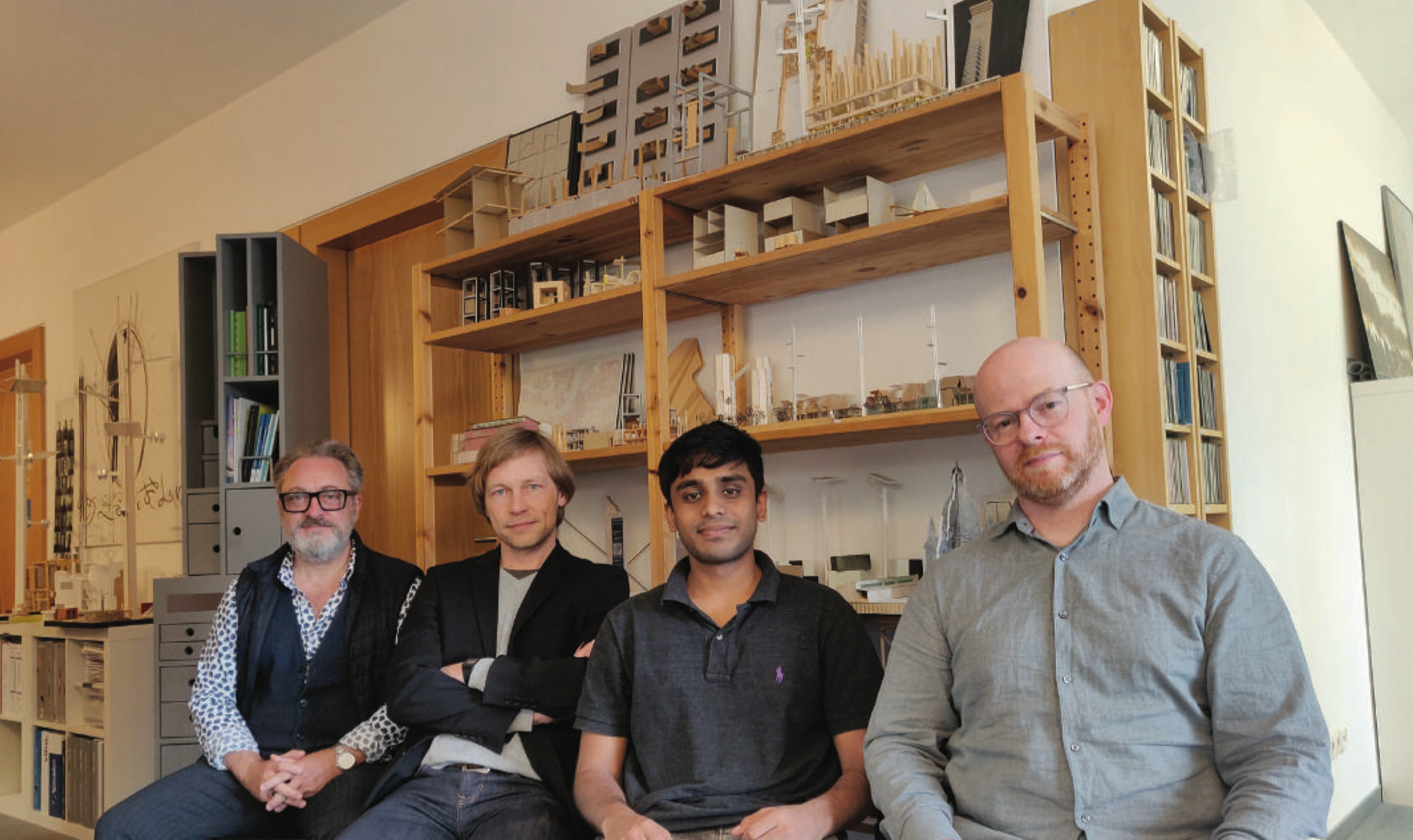 Team @ Ruairi O’Brien
Team @ Ruairi O’Brien
For now, I am continuing the work on the publication on programmable materials, while attending the online classes from IITR. I have started preliminary work on using GAN for spatial programming. Creativity is inherently multidimensional, one has to understand and manipulate multiple factors at the same time to create something new. There have been failed attempts to automate the creation of floor plans using conventional programming. I believe using neural networks for this is the right step ahead. This would be my future work in the next months.
Apart from work, I had a chance to hang out with a lot of amazing people, both colleagues and other friends I met in Dresden, with whom I had the vital doses of fun. I enjoyed hiking with friends in the mountains of Saxony, which is a go-to place during weekends. Dresden is a beautiful city and a cultural jewel of Germany. The city is filled with castles, museums, and is vibrant with activities. It felt like a blown-up version of IITR. I will never forget the long walks every day from the firm (new city centre) to my room (old city centre), walking through the bridges and castles of Dresden, crossing the Elbe river.
 Dresden Castle
Dresden Castle
It has been 9 months so far and counting, you can check out the detailed summary of everything here: https://issuu.com/nirajkamal/docs/niraj_16110024_report_compressed
I had a perfect time in Dresden. I was exposed to a sea of various fields and domains in Architecture. I gained in-depth knowledge on how research projects and proposals work, and how to handle research projects well. I also learned to strategically design many things and many technical aspects of spatial planning.
There were many situations where I had to make a decision and take a stand, which had shaped this journey. I had a few setbacks and unexpected delays while doing my projects, given the unpredictable times during a pandemic, but my supervisors were very supportive.
Its always good to have the curiosity and motivation to explore to find the perfect career path. Although, it is easy for one to be overwhelmed by the sheer number of possibilities, or get pressurised seeing peers. For me, it started with forming a vague vision and then pursuing things which align with it. There is no need to restrict yourself only to conventional paths, to be in the ‘safe’ side.
If the journey of pursuing that work is what you desire, if doing it is something which interests and motivates you, then you should go ahead with it. I am sure you will learn a lot, maybe it will be an impetus to your future endeavours, or maybe you will rediscover yourself and follow a different path. The ‘perfect’ career path doesn’t exist, its the one you will choose and make for yourself. Cheers!